The official title of the Houses of Parliament is the New Palace of Westminster. The name reminds us that the earliest Parliaments were consultations between the King and his closest followers, together with representatives of the Church, held at his London residence. The Houses of Parliament combine spectacular architecture with a fascinating history. Located next door to Westminster Abbey and inextricably linked to it by history the Houses of Parliament are an intriguing place to visit. Below are our Top Ten Facts about the Houses of Parliament.
1. The building is colour coded – gold in the parts used by the Monarch, red for the Lords and green for the Commons. Originally this hierarchy of colour – with green being the lowest grade – pretty much reflected the relative importance of each element of Parliament. Over the years the power of the Monarch and the Lords declined. Since 1689 the Commons has been the more powerful of the two chambers.
2. There is no single document outlining a written constitution for the United Kingdom, so the detail of how our Parliament operates can change quite fast. The one important fixed idea is that ‘Parliament is sovereign’. Parliament makes the laws, which the courts cannot overturn.
3. The Victorians were very keen that everyone visiting Parliament should receive a history lesson. Artists were hired to decorate the rooms with suitably elevated historical scenes. One or two made mistakes. In the ‘Princes Chamber’ (ante room to the Lords) there are portraits of members of the Tudor family and their spouses. Anne Boleyn, who was slim and dark haired, appears as a buxom blonde – actually Anne of Hungary. Catherine Parr’s head was replaced with that of teenager Lady Jane Grey. Lady Jane Grey herself had to make do with the ‘head of an unidentified Flemish lady’.
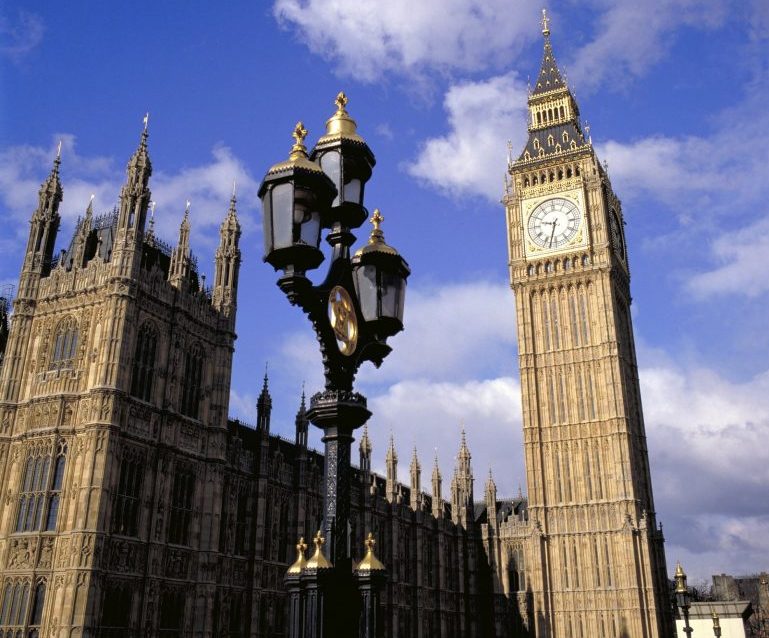 Palace of Westminster: Houses of Parliament, Big Ben and street lamp in foreground. Photo Credit: ©London & Partners.
Palace of Westminster: Houses of Parliament, Big Ben and street lamp in foreground. Photo Credit: ©London & Partners.
4. The role of the Speaker in the Commons is crucial, as they, together with three deputies have to keep their fellow MP’s in order. All debate goes through the chair, and the Speaker decides from moment to moment who can take the floor. A recent Speaker managed to sit through one debate for over ten hours without leaving the chair.
5. Since 2006, the presiding figure in the House of Lords has been the ‘Lord Speaker.’ Members of the House of Lords must avoid ‘asperity of speech’ and decide amongst themselves who speaks and in which order – so the Lord Speaker’s role is much more limited than that of the Speaker in the Commons. The first two ‘Lord Speakers’ were women.
6. In 1941 the Chamber of the House of Commons was destroyed in a bombing raid. It was rebuilt to designs by Giles Gilbert Scott, architect of both Bankside and Battersea power stations, as well as the famous ‘K2’ red telephone boxes dotted around the city. All the countries of the British Commonwealth contributed to the refurbishment. Australia provided a replica of the original Speaker’s chair, and Fiji provided ‘one silver-gilt inkstand.’
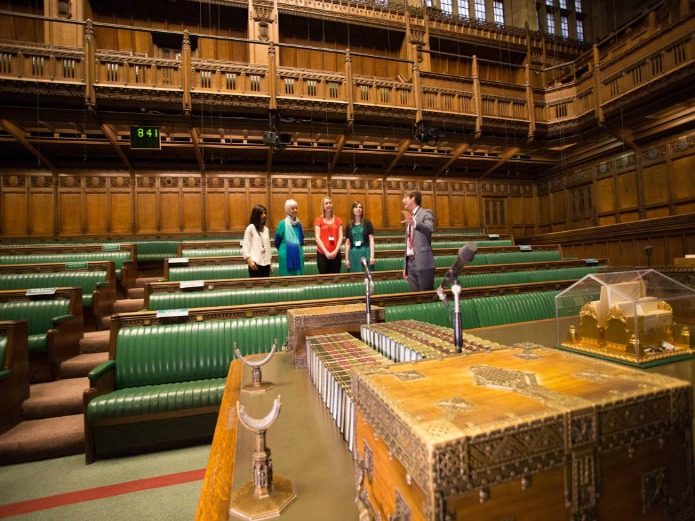 Palace of Westminster: Part view of ornate Victorian gothic architecture of the iconic Big Ben clock tower at the Houses of Parliament, designed by Sir Charles Barry and Augustus Pugin. Photo Credit: © Houses of Parliament.
Palace of Westminster: Part view of ornate Victorian gothic architecture of the iconic Big Ben clock tower at the Houses of Parliament, designed by Sir Charles Barry and Augustus Pugin. Photo Credit: © Houses of Parliament.
7. A vote in Parliament is called a ‘division’ because the House ‘divides in two’, with members getting up from their seats to be counted through one of two lobbies. In the Commons the MPs choose the ‘Aye’ or the ‘No’ lobby. In the Lords, the choice is between ‘Content’ or ‘Not Content.’
8. Anyone can listen to Parliamentary debates from the galleries or even sit in on committees as they take evidence. Entrance is on a ‘first come, first served’ basis. You are expected to listen quietly though. Anyone attempting a protest will be unceremoniously ejected. If there is no space in the galleries, you can follow debates on TV or read transcripts on the Internet.
9. The Monarch comes to Parliament generally just once a year for the State Opening of Parliament. The Monarch is only allowed as far as the Throne in the House of Lords. To go any further would be seen as an attempt to interfere with the workings of the elected Commons. The Monarch reads a speech setting out the Prime Minister’s legislative programme for the next year. Even if the Monarch disagrees with the Prime Minister’s plans there is nothing they can do to alter the speech.
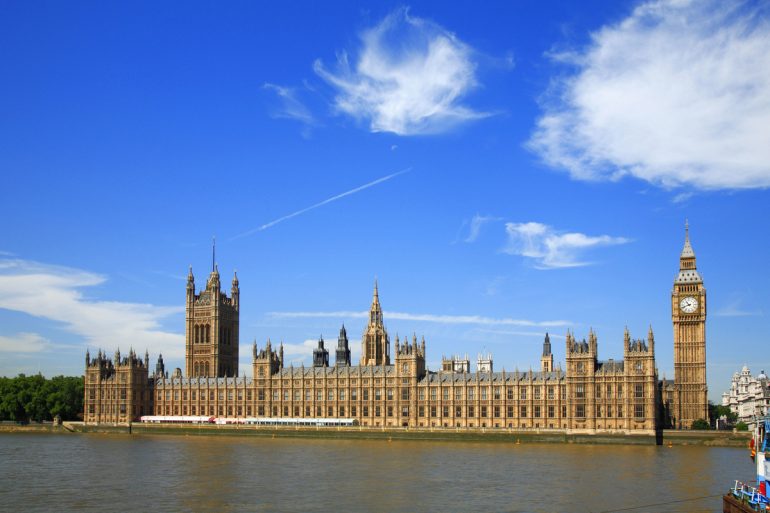 Palace of Westminster: River view of the Houses of Parliament. Photo Credit: © London & Partners.
Palace of Westminster: River view of the Houses of Parliament. Photo Credit: © London & Partners.
10. Strangely enough, ‘Big Ben’ isn’t visible from the street, as the name refers to the hour bell, which hangs inside Parliament’s clock tower. The largest bell ever to be cast in Britain, ‘Big Ben’, weighs in excess of thirteen tons. It was transported from Whitechapel bell foundry to its new home on a trolley pulled by sixteen horses in May 1859. No one knows exactly why the bell is called ‘Big Ben.’ Some say the bell is named after the clerk of works at the time – Benjamin Hall – who was tiny, others that the nickname referred to Benjamin Caunt – a burly Victorian prize-fighter. Since 2012, the official name of the 96 metre (315 ft) high Clock Tower has been the Elizabeth Tower. For millions of visitors, though, the name ‘Big Ben’ still conjures an image of the Clock Tower.
The above facts constitute only a tiny fraction of what you experience on a tour of Parliament with a Blue Badge Tourist Guide. Hear about the attempt to blow up Parliament in 1605 and how the British people found more peaceful ways to curb the power of their kings. Share in the long struggle of women to gain the vote, and see the wonderful ‘New Dawn’ sculpture which celebrates their endurance. Hear about the ‘acts of parliament’ – laws written on animal skin, the older ones literally ‘enrolled’ and stored in the Victoria Tower. Last but not least, in the great hall of the medieval palace – stand on the spot where Nelson Mandela spoke and where an earlier hero, William Wallace, was sentenced to death.



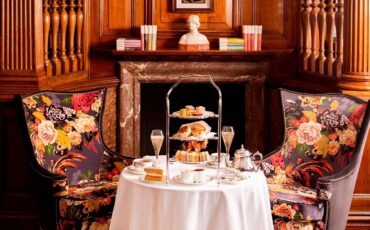
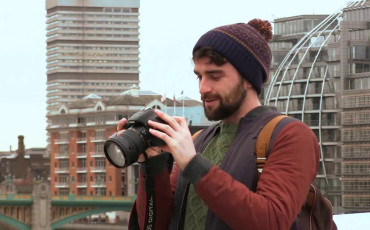


Leave a Reply